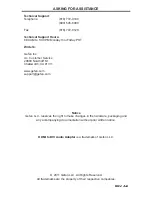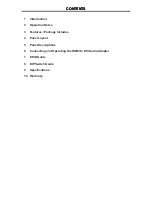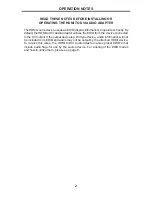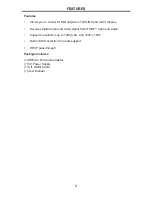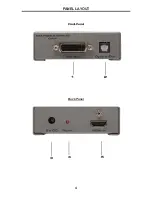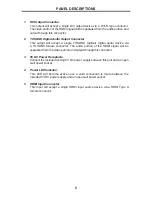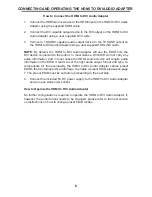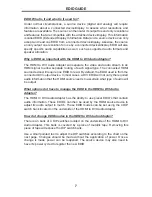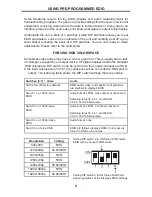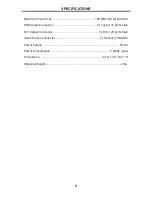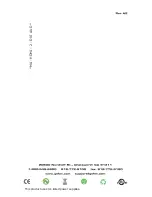
8
USING PRE-PROGRAMMED EDID
Some situations require forcing EDID (display and audio capability data) for
troubleshooting purposes. The goal is to provide settings that the source device will
understand, resolving cases where the data is indeterminate or wrong due to an
interfacing issue and the source does not know what signal to output to the display.
Underneath the unit, a bank of 4 switches (called DIP switches) allows you to set
EDID parameters. Look on the underside of the unit and carefully peel off a grey
silver sticker revealing the bank of 4 DIP switches. You are now ready to make
adjustments. Please refer to the chart below.
FORCING RGB COLORSPACE
Sometimes output video may have a pink or green tint. This is usually due to lack
of colorspace support by an output device. All digital displays handle the standard
RGB colorspace. DIP switch 2 can be set to force the output colorspace to RGB.
If the input colorspace is YCbCr, the colorspace will be converted to RBG prior to
output. The following table shows the DIP switch settings that are possible:
Switches [4:1] /
Video
Audio
All Dip Sw. off (factory default)
EDID audio, video, and speaker confi gurations
are identical to display's EDID.
Switch 1 on, 1080i native
EDID
Audio format: LPCM, max number of channels: 8
Sampling rates 32, 44.1, and 48 KHz.
24, 20, and 16 bits/sample.
Switch 2 on, 1080i native
EDID
Audio format: LPCM, 2 channels maximum.
Sampling rates 32, 44.1, and 48 KHz.
24, 20, and 16 bits/sample.
Switch 3 on, 1080p native
EDID
Audio format: none.
Switch 4 on, force RGB
EDID A/V follows display’s EDID. Color space is
forced to RGB on the output.
Resolution
Timing
640x480
60Hz
720x480i/p
59.94/60Hz
720x576i/p
50Hz
1280x720p
50Hz
1280x720p
59.94/60Hz
1920x1080i/p
50Hz
1920x1080i/p
59.94/60Hz
Setting DIP switch 2 to ON forces 1080i native
EDID with 2-channel LPCM audio:
Setting DIP switch 4 to ON forces RGB Color
Space regardless of the Display’s EDID settings.


